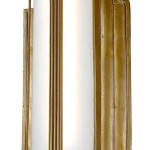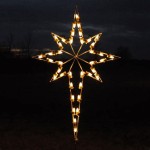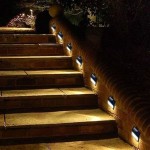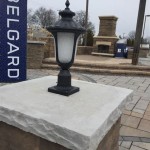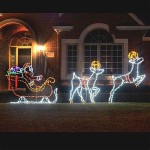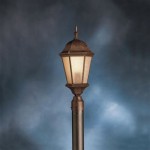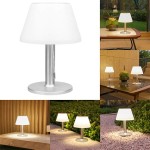Photography Lighting Equipment for Outdoors
Outdoor photography offers a plethora of natural lighting options, but mastering them requires understanding the nuances of light quality and direction. To elevate your outdoor photography, a well-equipped lighting kit can provide creative control and unlock a world of possibilities. Whether you're shooting portraits, landscapes, or wildlife, the right lighting equipment will help you capture stunning images regardless of the natural light conditions.
Understanding Natural Light
Natural light is the foundation of outdoor photography. It's free, abundant, and offers a wide range of qualities depending on the time of day and weather conditions. However, mastering natural light requires understanding its key characteristics:
- Direct sunlight: This is the strongest form of natural light, often producing harsh shadows and high contrast. It's ideal for dramatic effects but can be difficult to work with for portraits.
- Diffused sunlight: When sunlight is filtered through clouds or foliage, it becomes softer and more even, creating a more flattering light for subjects.
- Golden hour: This refers to the hour after sunrise and the hour before sunset, when the light is warm, soft, and casts long shadows. It's a popular time for photographers due to its beautiful and romantic qualities.
- Blue hour: This occurs during the twilight hours before sunrise and after sunset, offering a cool, blue-toned light that can be dramatic and ethereal.
While natural light offers a diverse range of possibilities, artificial lighting equipment allows you to control and shape the light to achieve your desired vision. This is particularly valuable in situations where natural light is lacking or when you need a specific type of illumination.
Essential Lighting Equipment for Outdoor Photography
There are several types of lighting equipment specifically designed for outdoor photography. Let's delve into some of the most popular options:
1. Flash Units
External flash units, also known as speedlights, are portable and powerful tools that provide a burst of artificial light. They are particularly useful for freezing motion, illuminating subjects in low light, and adding a pop of light to create dramatic effects.
Types of Flash Units:
- On-camera flash: These compact flash units attach directly to the hot shoe of your camera. They are convenient for general use but may produce harsh light.
- Off-camera flash: These flash units can be detached from the camera and placed off to the side, allowing for more creative lighting setups.
2. Continuous Lighting
Continuous lighting remains on constantly, similar to household lights. They are often preferred for video shoots, portraits, and product photography as they allow you to see the light's effect on your subject in real-time.
Types of Continuous Lighting:
- LED Lights: LED lights are energy-efficient and compact, offering a variety of color temperatures.
- Fluorescent Lights: These lights are known for their brightness and affordability. They are often used in studio settings but can also be used outdoors.
3. Reflectors
Reflectors are portable and versatile tools that bounce existing light back onto your subject, softening shadows and adding fill light. They come in various sizes and materials, each offering different light diffusion and intensity.
- White Reflectors: Reflect white light, providing a natural look.
- Silver Reflectors: Reflect a more intense light.
- Gold Reflectors: Add a warm glow to your subjects.
4. Diffusers
Diffusers are used to soften and disperse light, creating a more flattering effect on your subject. They can be handheld or mounted on a light stand and are often used with flash units to reduce harshness.
- Softboxes: Softboxes are popular for their ability to produce soft and even light. They are often used in portrait photography to give subjects a flattering and natural appearance.
- Umbrellas: Umbrellas are another form of diffuser that can be used to create both soft and directional light. They are often used in studio photography but can also be used outdoors.
Key Considerations for Choosing Lighting Equipment
Selecting the right lighting equipment for outdoor photography involves considering several factors:
1. Light Quality
Consider the type of light you want to achieve. Do you want soft, diffused light for portraits or harsh, directional light for dramatic landscapes? The choice of your lighting equipment will determine the overall quality of light.
2. Portability
Outdoor photography often involves movement and changing locations. Opt for lightweight and compact equipment that's easy to carry and transport. For example, LED lights and reflectors are generally more portable than large studio lights.
3. Power Source
Consider the power source for your equipment. Some flash units require batteries, while others can be powered by an external power pack. Continuous lighting may require access to an electrical outlet or a battery-operated setup.
By understanding the fundamentals of natural light, exploring various lighting equipment options, and choosing the right tools for your needs, you can elevate your outdoor photography and capture stunning images with creative control.

Photography And Lighting Equipment For Bloggers Sarah Hearts

Lighting Outdoor Photography Setup Portrait Studio

Buy Whole China Outdoor Photography Lighting Equipment With Compact Structure Photo Studio Kits Global Sources

Atls Photography Equipment Storage Light Diy

Mini Portable Diving Fill Light Gopro Outdoor Photography Lights K F Concept

Zsyb Cl 60bi Bi Color Led Light Handheld Outdoor Photography Lights Lamp

Premium Photo Grip Team Light Depurtment Members Prepare The Lighting Equipment Before Shooting

Portrait Photography Work Neeta Shankar Private Limited Candid Wedding And Lifestyle Photographer

Thinsont Lamp Fitting Lighting Accessories Universal Indoor Outdoor Use Photography Equipment Led Light Filling Lights Com

Portable Small Photography Fill Light 40w Cob Led Bowens Mount Lighting For Recording Outdoor Shooting Joom
